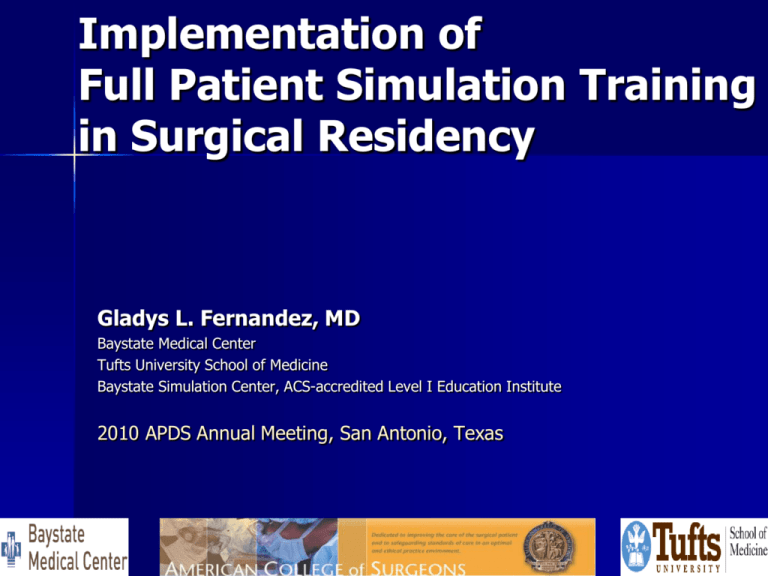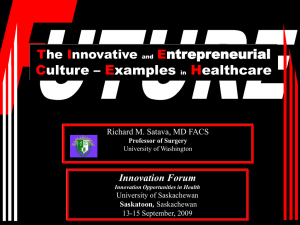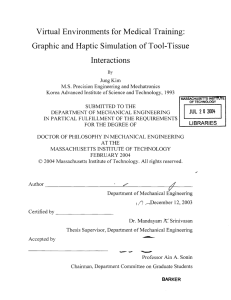Implementation of Full Patient Simulation Training in Surgical
advertisement

Implementation of Full Patient Simulation Training in Surgical Residency Gladys L. Fernandez, MD Baystate Medical Center Tufts University School of Medicine Baystate Simulation Center, ACS-accredited Level I Education Institute 2010 APDS Annual Meeting, San Antonio, Texas Disclosure Consultant for Medical Education Technologies, Inc. Objectives Review course of Patient Simulation implementation in our surgical residency Discuss aims and methods of Patient Simulation integration into curriculum Describe our program experiences Explore future implementation plans Surgical Patient Simulation Clinical management performed in a high fidelity simulation environment using a manikin simulator Specifically modeled experiential learning Knowledge Skills Behaviors Evolution of Surgical Patient Simulation at BMC Phase III Trauma Orientation Team Training QA/HCQ initiatives Curriculum integration Center expansion 1st Boot Camp ACS EI accreditation Curriculum development 1st PS use 2005 2006 2007 2008 2009 Curriculum Design Needs assessment based Critical management problems – – – – – Objectives-based Patient management skills Clinical decision-making Learner-specific needs Assessment around core competencies Curriculum Content Introduction / orientation Modeling Best Practice Global initiatives Institutional M & M Institutional QA / HCQ Remediation Preparation Teaching Team Preparation – Facilitator – Embedded educator Scene preparation Rehearsal – “Flow” – Educational cues Simulated Clinical Experiences One hour sessions – Shock states – Trauma – Critical Care – Preoperative processes – Postoperative complications Multi-item assessment Debriefing Structured Objectives-based Assessment Learner-driven Self-reflective Positives Challenges Video playback Take-home messages Teaching Team Debrief Results July 2006—June 2009 4.5 ± 1.4 sessions per academic year 39 PGY 1, 2, 3 residents – 10 followed PGY 1 2 – 4 followed PGY 1 2 3 Results 100 PS Compliance over Successive Years 99 95 90 % Attendance 90 88 85 80 75 70 AY '06-'07 AY '07-'08 AY '08-'09 Results PS Performance Over 3 Years [n=4] 100 100 95 95 90 90 85 85 PGY-1 80 PGY-2 75 Score (%) Score (%) PS Performance Over 2 Years [n = 10] 80 PGY-2 75 PGY-3 70 70 65 65 60 60 A B C D E F G Resident H I J PGY-1 A B C D Resident 81 ± 5 vs 86 ± 4 82 ± 4 vs 86 ± 2 vs 91 ± 1 (p<0.01) (p<0.005) Results 39 residents 8 > 2 SD below mean 5 = clinical Conclusions Patient simulation training was successfully implemented in our surgical residency. Assessment instrument can detect predictable improvements across years Challenges: – Competition with other educational activities – Fidelity and realism Further work required to determine effects on resident clinical competency X







